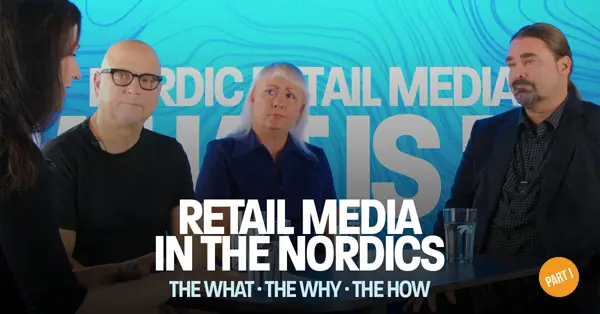This post is originally published in Doohlabs website: www.doohlabs.com
---
One of the key challenges for getting in-store retail media projects started in our retail customers’ organizations is the data question. It can sometimes be difficult for business developers to get their colleagues to understand the true value of customer insight in creating audiences, despite the obvious major business benefits that can be gained with it. Why and how would in-store retail media use customer data? Is it safe? In this blog post, we will answer all these questions and explain how to make your organization realize the potential value you can create with it in in-store retail media.
The data dilemma
Our company Doohlabs is from The Nordics, specifically we come from Finland. In Finland, we have a very concentrated structure of grocery retail in which 2 chains dominate the market with about 80% of trade. Both big ones have extensive loyalty programs and the next ones in size have developed their programs for a long time too. The situation applies to some extent to all countries in the Nordics. Thus, for us, the existence of large-scale customer data from loyalty and POS systems to be used for creating very valuable retail media audiences has always been self-evident.
Because of our background, when we first started talking about our platform in the global marketplace, we had a hard time understanding why many retailers kept telling us that they didn’t have the data. For us it was obvious they needed to have it: if not in their loyalty programs, then in POS systems.
The solution
In time, we started to realize that we were not talking about the same data as they were. You see, in In-store retail media, the POS data needed for targeting different audiences in stores is not actual shopper data. It’s not at an individual level nor can advertisers see any of the sales figures from the POS system in the process. What we need is aggregated data in format such as “the best hours to sell category X products in different stores of this chain.”

When retailers started to realize what we meant, the business developers involved in the process could communicate their security department that the data was not in any kind of danger and that our platform only caters the ready-made audiences for media sales. When the door was finally opened, we started to have discussions about the next level of data that would be available, and which could be used to create even more refined audiences for retailers.
For retail, the basic level of the data is thus the best sales hours for product categories – of course, you can always drill this down to a more detailed category level. Adding a basic understanding of different demographics visiting stores creates more value for advertisers. This can be obtained via loyalty programs, existing customer research or by sensors or computer vision. Using segment data in a store at any given hour in conjunction with best sales hours is already a level that satisfies even the most demanding in-store advertisers.
How to be the best retail media partner for advertisers?
When the business developers now had the means to explain the need to have quality customer insight in discussions with C-level management, the whole discussion about having the data changed: from not being able to get it at all to finding out what was the most valuable data they could use in this way.
Example reach in different levels:

By using more detailed category-level data and finally combining it with customer segments actually buying the product, advertisers get their message seen at the right time in the right place. When the screens are also located at the end cap of each product category, the ads are seen right where the actual purchasing decision is made. This is where the real magic of in-store retail media and the intelligent use of data lies.

In conclusion
All retailers – whatever their readiness level with data is –can start their in-store retail media business right away and gradually create new layers for advertisers. The most important aspects for retailers’ data strategy is to get the upper management aboard, help them to understand why the data is needed and to realize how much value can be created with it. The other important group you need to get involved in is your data security department. They must understand that no customer data is ever in danger with in-store retail media.
Advertisers’ big expectations of retail media also naturally concern measurability. Understanding how various campaigns affect the real-life purchasing decisions of different target groups is a major motivator to choose retail media over other advertising channels. This is a big thing and deserves a writing on its own. We’ll get back to you with this subject later.
---
Our sister company - Doohlabs - is an end-to-end in-store retail media platform with all the needed elements to run a successful in-store media business: from audience creation to sales via different channels and distributing the ads for the right audience on the right screens at the right moment.







